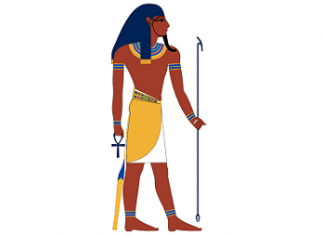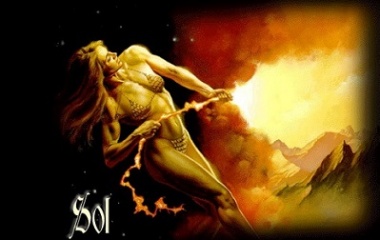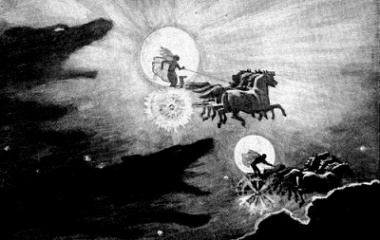- Pronunciation: Soul
- Origin: Scandinavia
- Role: Sun goddess, healer
- Symbols: Sun
- Children: Sunna (possibly)
- Siblings: Mani, Sinthgunt
Who Is Sol?
In the beginning of time, when the cosmos were being created, so too was the Nordic goddess Sol, brought into the universe along with her brother, Mani. Initially, the role of the siblings wasn’t clear, but after they created daytime and night, and also the phases of the moon, Sol and her brother were assigned their destiny. At a meeting of the existing gods, Sol was anointed the goddess of the sun, and Mani god of the moon.
Sparks were gathered by the gods from Muspellsheim, the Land of Fire, and the sun, moon and stars were created. Sol was to ride in the sky in a chariot drawn by her horses, Arvak, which translates to early riser, and Allsvinn, meaning swift. They raced quickly across the skies as they were being chased by Skoll, an evil wolf.
Origin
According to the Prose Edda, written by Icelandic scholar Snorri Sturluson in the 13th century, Mundilfari was the father of Sol and her brother Mani. Sol was so beautiful Mundilfari named her after the sun, and Mani was named for the moon. The gods were collectively irritated by the arrogance of Mundilfari in his choosing of the children’s names, and decided to force Sol to drive the chariot of the sun as punishment for his conceit.
Svalinn rode with the goddess in the chariot and held a shield between her and the Earth below to prevent the land and the sea being consumed by flames.
On occasion, the wolf Skoll would get close enough to the chariot to risk a nip at the goddess, causing a solar eclipse.
Family of Sol
The family varies between different Nordic mythology literature sources. There is an agreement that Sol was the daughter of Mundilfari, who is proposed as either a Norse giant or a human depending on the writings referred to. Her brother is agreed to be Mani, the god of the moon, whose chariot was also chased by a wolf, this time one named Hati, across the evening sky.
Their sister Sinthgunt is the goddess of the flow of time, and of the shifting of power. There is little mention of her in the literature but it is known that she was considered magical and powerful, and could be terrifying at times.
There is another discrepancy regarding Sunna. Some say Sunna is another name for the goddess Sol and that they are actually one and the same, while others claim that Sunna was the daughter of the goddess.
The husband of Sol was Glenr, which means “opening in the clouds”. Little else is known about him.
Historical Influence
During Ragnarok, the “twilight of the gods”, which in Norse mythology is the end of the world, Sol is finally swallowed by the wolf Skoll along with the sun, and the Earth submerges into the waters. Ragnarok is a major event in the legends of the Norse. A huge battle occurs, along with a series of natural disasters that consume the world. Only two humans and a few gods survive. Subsequently, a new world rises that is rejuvenated and fertile. The reborn gods meet once again, and Sunna, the daughter of Sol, now even outshines her mother.
Norse mythology reflects a fundamental belief in opposites and the dual nature of the world. The story of Sol and her counterpart, the chasing wolf Skoll, is a clear example of the ancient religion’s take on metaphysical duality.
Modern Influence
Unlike in the mythology of other cultures, the goddess of the sun was not a major focus of the Norse people. The oldest known documents about the Germanic pagan religion are called the Merseburg Incantations. Written in Old High German, are two medieval spells or incantations. They are stored in the cathedral of Merseburg, Germany, hence their name. The incantations reveal that Sol was honored as a deity of protection and victory, in addition to as the goddess of the sun. She was also a healer. Despite being somewhat of a lesser goddess of the legends, Sunday (Sunnudagr) originated as the specific day in her honor.
It is said that in Norway, the Land of the Midnight Sun, where the sun stays high in the sky for 10 weeks, Sol is emphasizing her power.










